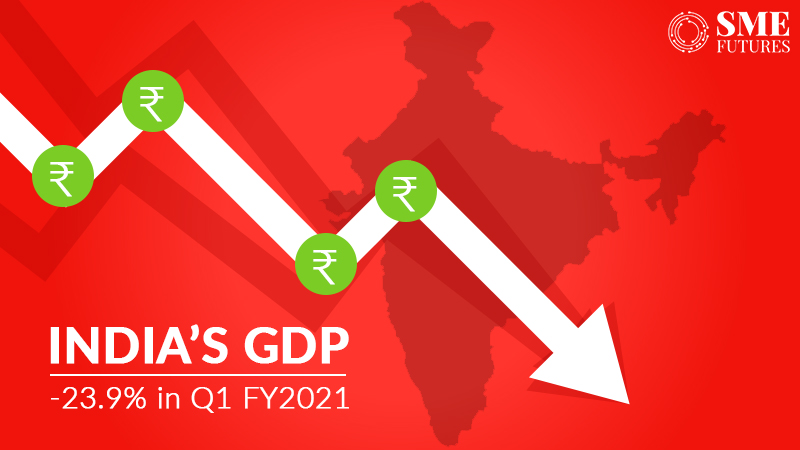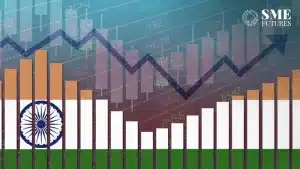India’s economy contracted at its steepest pace of 23.9 per cent in the June quarter as the pandemic lockdown dented consumer and business spending, putting pressure on the government and central bank for further stimulus and a rate cut.
The gross domestic product (GDP) data released on Monday showed consumer spending, private investments and exports all collapsed during the world’s strictest lockdown imposed in late March to combat the COVID-19 pandemic.
A Reuters poll of economists had forecast that GDP in the world’s fifth-largest economy will contract by 18.3 per cent in the June quarter, compared with 3.1 per cent growth in the previous quarter, the worst performance in at least eight years.
In expert opinions the contraction of GDP was long expected. According to Dr. Arun Singh, Global Chief Economist, while majority of the economic activity has restarted with ‘Unlock 4’, the steady rise in caseloads and the spillover effects of the strict lockdown measures will continue to undermine the growth impulses during the subsequent quarters of the year.
“Survey results reveal the scenario to be not so optimistic for Q2 FY21. Further, in July 2020, the energy requirement for the top 7 states, with highest number of confirmed cases, except for UP, remained far below their 3-year average level, indicating the subdued pace of economic activity in Q2 FY21 as well.”
Singh claims that without a reduction in the number of cases, the festivities, which usually lends a buoyancy to the growth momentum, will also remain subdued. “This will pull down overall growth. Constrained government finances, contraction in investment activity, probable defaults both at firm and consumer level, and bankruptcies will continue to be a drag on GDP growth in FY21,” he adds.
Suvodeep Rakshit, Senior Economist, Kotak Institutional Equities, Mumbai says, “Real GDP growth at -23.9 per cent in 1QFY21 was much lower than what the markets were expecting. The choice for the government will be on whether the consumption or the investment side needs to be pushed. Given the limited fiscal space and the need to stimulate a more durable growth, the growth recovery will be gradual and is likely to continue into 1HFY22.”
“Given the lack of reporting due to the lockdown in Q1 (especially for the informal sector), we expect the GDP numbers to be revised down further in subsequent releases,” says Sakshi Gupta, Senior Economist, HDFC Bank, Gurugram
“Hopes of an economic recovery in the second half of the year have been pinned on a rural sector revival. However, with the virus spreading to the hinterland, the rural support might be lower than expected,”
“In terms of the growth prints, Q1 is likely to be the worst print and it will be a very slow grind up from this bottom going forward. We continue to expect a -7.5 per cent growth print for the year with a downward bias to our forecast.”
India’s total caseload stands at over 36.9 lakh. Of these, 28.3 lakh have recovered. while there are nearly 7.9 lakh active cases in the country.
Aditi Nayar, Principal Economist at ICRA, “The GDP and GVA plunged precipitously in the lockdown-ridden Q1 of FY2021, both printing similar to our forecast of a 25 per cent contraction. Moreover, incoming data on the MSME and less-formal sectors could manifest in a deeper contraction when revised data is released subsequently. We maintain our forecast that the Indian economy will contract by 9.5 per cent in FY2021.
“The wide discrepancy between the double-digit growth of the government’s final consumption expenditure and the contraction in public administration, defence and other services on the production side, is rather incongruous.” She adds.
Sujan Hajra, Chief Economist at Anand Rathi Securities also says that this decline was expected as there was a lockdown for roughly half of the quarter. The infrastructure data showed the decline was less than 10 per cent, and with the exception of cement and steel, all other sectors have done reasonably well.
“The Reserve Bank of India (RBI) won’t lose too much sleep on this number as it was expected. The RBI still has its focus on growth. This (GDP number) slightly improves chances of a rate cut in October. Unless the inflation comes below 5 per cent in the next reading, the RBI still might postpone the rate cut to December.”










